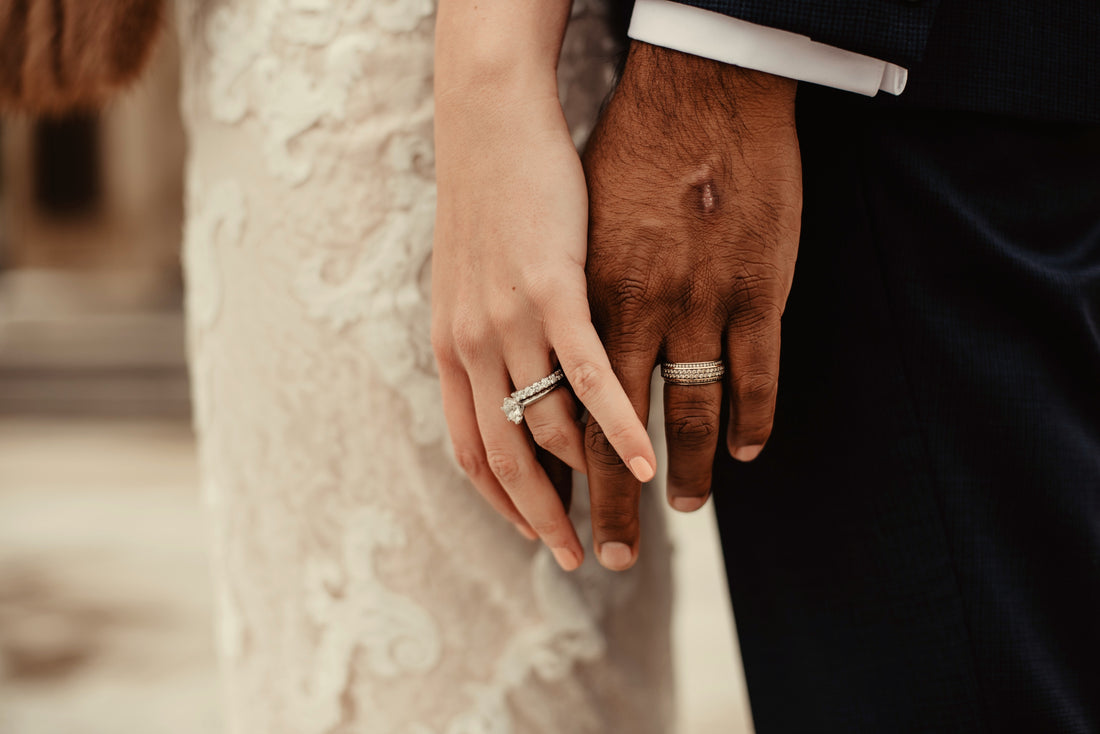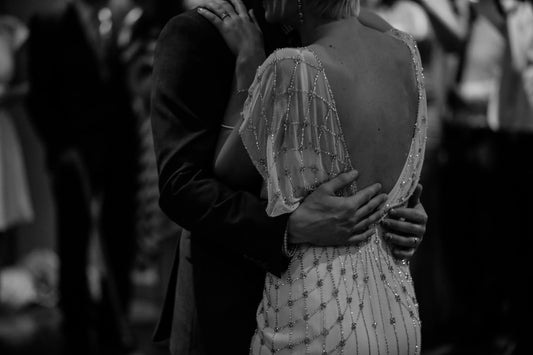Introduction
The history of wedding rings goes back to ancient Egypt, 5000 years ago, Egyptians believed in the vena Amoris, which literally means the "Vein of Love".
According to traditional beliefs, the vein runs directly from the fourth finger of the left hand and ends in the heart.
Wedding rings were made of woven reeds, hemp, wedges, grasses or leather.
Ancient Greeks wore wedding rings made of leather, bone, or ivory while Roman wedding rings were later made of iron called (Anulus Pron Ubus) Which means" Bridal Ring".

Nowadays wedding rings come in a variety of different forms and shapes, they might be simple and sleek, with small or big diamonds, silver or gold metal.
When choosing a wedding ring, most people living in western countries choose 14-carat white gold, while yellow gold is more popular in the eastern world.
Join us on a fascinating journey as we delve into the captivating history of wedding rings, exploring their origins, evolution, and enduring significance.
1- Ancient Beginnings:
The origins of wedding rings can be traced back to ancient civilizations. The ancient Egyptians are often credited with the inception of the wedding ring tradition, The circle, a shape without a beginning or end, symbolized eternity—a fitting representation of the unending bond of marriage. These early rings were typically made of braided reeds, leather, or bone, and were exchanged by couples as a sign of commitment.

Photo Credit Glencairn Museum
2- Roman Influence:
The Romans, known for their grand celebrations and cultural influence, played a significant role in shaping the traditions surrounding wedding rings. During this era, iron bands emerged as popular choices for wedding rings, symbolizing strength and permanence. Wealthier Romans also incorporated precious metals, such as gold and silver, into their rings.

Photo By The Metropolitan Museum of Art
3- Medieval Symbolism:
The medieval period brought forth a shift in the symbolism associated with wedding rings. Christianity began to influence marital ceremonies, and the ring became a symbol of religious commitment. The introduction of gemstones into wedding rings was believed to bring good luck and fortune to the couple. The use of elaborate engravings also became common, adding a personal touch to these cherished symbols of love.

Inside the band is an inscription in French that translates to "I hold your faith, hold mine.
Photo By Smithsonian Magazine\
4- Renaissance Refinements:
The Renaissance era witnessed a renewed emphasis on aesthetics and individual expression, leading to the evolution of wedding ring designs. Intricate metalwork, including delicate engravings and filigree patterns, became popular. Rings adorned with precious gemstones and pearls became fashionable among the aristocracy, showcasing wealth and social status.

Photo By axecop - Photography
5- Modern Traditions:
The industrial revolution in the 19th century brought about significant advancements in jewelry production, making wedding rings more accessible to a broader range of people. The discovery of new materials, such as platinum, allowed for greater durability and creative designs. Additionally, the diamond industry's marketing efforts popularized diamond engagement rings as an integral part of the marriage proposal tradition.

Photo By The Glorious Studio - Photography
In the 20th and 21st centuries, wedding ring styles diversified further, reflecting the changing cultural and individual preferences. From classic gold bands to intricate designs incorporating multiple metals and gemstones, couples now have a wide array of choices to symbolize their unique love story.

Photo By The Glorious Studio - Photography
Conclusion
The history of wedding rings encapsulates the evolution of human relationships and the enduring symbolism associated with marriage. From their humble beginnings as simple bands made of reeds or leather to the sophisticated designs crafted by skilled artisans today, wedding rings continue to serve as tangible reminders of love, commitment, and unity.
As we exchange these circular symbols during wedding ceremonies, we honor the legacy of countless generations who have walked the path of matrimony before us. The wedding ring's timeless significance lies not only in its physical form but also in the profound emotions and promises it represents.






1 reactie
Love this ❤